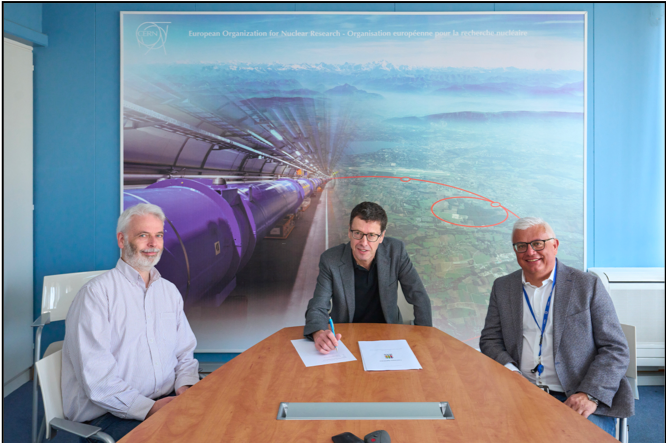Muon colliders can reach centre-of-mass energies of tens of TeV with high luminosity, and they also allow accurate tests of the Standard Model at extremely high energy, offering opportunities to detect new physics indirectly and to confirm and to characterise direct discoveries. However, a number of technical challenges must be overcome in order to realise a muon collider.
Funded by the European Union, the MuCol programme will address the core of these key challenges. Started in March 2023 for a duration of four years, this design study will look at the muon collider facility using a holistic approach, from muon generation to collision, including the interaction regions and the background to the experimental detectors, and will explore the associated technologies. The consortium comprises 32 institutes out of which 12 are beneficiaries and 20 associates.
The facility design should demonstrate that:
- the physics case of the muon collider is sound and detector systems can yield sufficient resolution and rejection of backgrounds;
- there are no principle technology showstoppers that will prevent the achievement of a satisfactory performance from the accelerator or from the detectors side;
- the muon collider provides a highly sustainable energy frontier facility as compared to other equivalent colliders;
- exploiting synergies with other scientific and industrial R&D projects, it is a valuable platform to provide Europe a leading edge not only in terms of discovery potential, but also for the development of associated technologies.

On area of synergy is magnet design, and in particular the muon target solenoid. In order to reach the very high fields (20T) required by the muon beam while keeping a high efficiency, the Consortium is looking at high-temperature superconducting cables inspired by those developed for advanced thermonuclear fusion reactor concepts [1].
The identification of the cost and power consumption drivers will enable determination of the cost and power consumption scale. This will allow the next European Strategy for Particle Physics Update (ESPPU) process to make informed choices for the selection of the next large collider to be built in Europe.
[1] Z. Hartwig, et al. "VIPER: an industrially scalable high-current high-temperature superconductor cable", 2020 Supercond. Sci. Technol. 33 11LT01, DOI 10.1088/1361-6668/abb8c0.
The MuCol project is funded by the European Union under Grant Agreement No. 101094300

